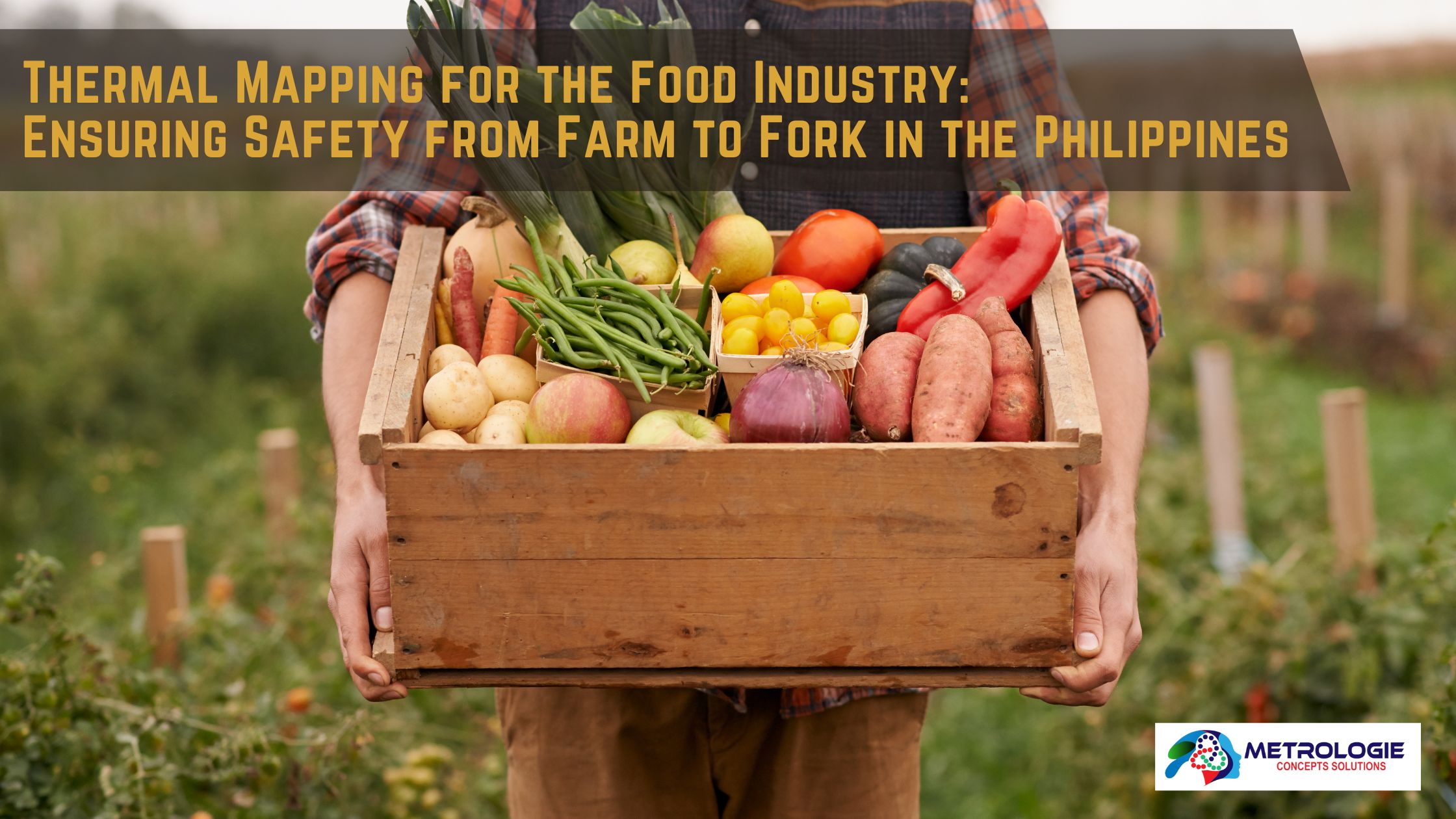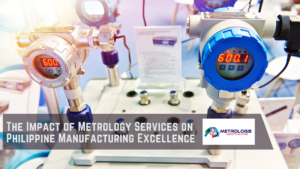Introduction
In the food industry, safety and quality are non-negotiable. From farm to fork, every stage of food production, processing, storage, and distribution must adhere to stringent safety standards to prevent contamination and ensure that the final product is safe for consumption. In the Philippines, where the food industry plays a significant role in the economy, maintaining these standards is crucial.
One of the most effective tools for ensuring food safety is thermal mapping. Thermal mapping, also known as temperature mapping, is a process that monitors and records temperature variations in environments where food is stored, processed, or transported. This process is vital for identifying potential risks, ensuring regulatory compliance, and maintaining the quality and safety of food products.
In this article, we will explore the importance of thermal mapping in the Philippine food industry. We’ll discuss its role in ensuring food safety, the key areas where thermal mapping is applied, the benefits it offers, and the best practices for implementing a robust thermal mapping program.
The Importance of Thermal Mapping in Food Safety
1. Regulatory Compliance
The food industry in the Philippines is governed by various regulations that require strict temperature control during food storage, processing, and transportation. The Food and Drug Administration (FDA) of the Philippines, for instance, has specific guidelines for the storage and handling of perishable goods, including fresh produce, meat, dairy products, and seafood. Compliance with these regulations is essential to avoid penalties and ensure that food products are safe for consumers.
Thermal mapping helps businesses comply with these regulations by providing accurate and reliable data on temperature variations within storage facilities, processing areas, and transportation units. This data is crucial for demonstrating compliance during audits and inspections.
2. Prevention of Food Spoilage
Temperature fluctuations can lead to the growth of harmful bacteria, mold, and other pathogens that cause food spoilage. In a tropical country like the Philippines, where high humidity and temperatures are common, the risk of food spoilage is even greater. Thermal mapping helps identify areas where temperature deviations occur, allowing businesses to take corrective actions before spoilage happens.
By maintaining consistent temperatures, businesses can extend the shelf life of their products, reduce waste, and minimize financial losses associated with spoiled goods.
3. Protection of Public Health
Foodborne illnesses are a significant public health concern in the Philippines. Contaminated food can lead to serious health issues, including food poisoning, gastrointestinal infections, and even death. Thermal mapping plays a critical role in preventing foodborne illnesses by ensuring that food products are stored and transported at safe temperatures.
By identifying temperature deviations that could lead to bacterial growth or contamination, thermal mapping helps protect consumers from foodborne diseases and ensures that the food they consume is safe and healthy.
4. Maintaining Food Quality
Beyond safety, temperature control is essential for maintaining the quality of food products. For instance, fresh fruits and vegetables require specific temperature ranges to preserve their freshness, texture, and nutritional value. Similarly, dairy products, meats, and seafood must be stored at precise temperatures to prevent spoilage and maintain their taste and quality.
Thermal mapping ensures that food products are kept within the ideal temperature range, preserving their quality from farm to fork. This is particularly important in the Philippine food industry, where consumers demand high-quality, fresh products.
Key Areas for Thermal Mapping in the Food Industry
Thermal mapping is applied across various stages of the food supply chain, from production to distribution. The following are key areas where thermal mapping is essential:
1. Cold Storage Facilities
Cold storage facilities are crucial for preserving perishable goods, such as fruits, vegetables, meat, dairy, and seafood. These facilities must maintain consistent temperatures to prevent spoilage and contamination. Thermal mapping in cold storage facilities involves monitoring temperature variations within the storage units to ensure that all areas are kept within the required temperature range.
2. Food Processing Plants
In food processing plants, temperature control is vital for ensuring the safety and quality of food products. Thermal mapping is used to monitor temperature variations in areas where food is cooked, cooled, packaged, or stored. This helps identify potential risks, such as hot or cold spots, that could compromise food safety.
3. Transportation and Distribution
The transportation of food products from farms to processing plants, storage facilities, and retail outlets is a critical stage in the food supply chain. During transportation, food products are vulnerable to temperature fluctuations that could lead to spoilage or contamination. Thermal mapping is used to monitor temperatures within transportation units, such as refrigerated trucks, to ensure that food products remain within safe temperature ranges throughout the journey.
4. Retail and Food Service Outlets
Retail stores, supermarkets, and food service outlets, such as restaurants and catering businesses, also rely on temperature control to maintain the safety and quality of food products. Thermal mapping is used to monitor refrigeration units, display cases, and storage areas to ensure that food products are stored at the correct temperatures.
Benefits of Thermal Mapping in the Food Industry
Implementing a robust thermal mapping program offers numerous benefits to businesses in the food industry. These include:
1. Enhanced Food Safety
Thermal mapping provides businesses with accurate and reliable data on temperature variations, enabling them to take proactive measures to prevent foodborne illnesses and contamination. By identifying potential risks early, businesses can implement corrective actions to ensure that food products are safe for consumers.
2. Improved Regulatory Compliance
Compliance with food safety regulations is essential for businesses in the Philippine food industry. Thermal mapping helps businesses meet regulatory requirements by providing documented evidence of temperature control measures. This data can be used during audits and inspections to demonstrate compliance and avoid penalties.
3. Cost Savings
Food spoilage and waste can result in significant financial losses for businesses. Thermal mapping helps reduce these losses by ensuring that food products are stored, processed, and transported at the correct temperatures. This not only extends the shelf life of products but also minimizes the risk of spoilage, reducing waste and saving costs.
4. Increased Consumer Confidence
Consumers in the Philippines are becoming increasingly aware of food safety issues and are more likely to choose products from businesses that prioritize safety and quality. By implementing thermal mapping, businesses can build consumer trust and confidence in their products, leading to increased customer loyalty and sales.
5. Optimization of Operations
Thermal mapping provides valuable insights into temperature variations within storage facilities, processing plants, and transportation units. This data can be used to optimize operations, such as adjusting temperature settings, improving insulation, or upgrading equipment. By optimizing temperature control measures, businesses can improve efficiency and reduce energy costs.
Best Practices for Implementing Thermal Mapping
To maximize the benefits of thermal mapping, businesses in the food industry should follow these best practices:
1. Conduct a Thorough Risk Assessment
Before implementing thermal mapping, conduct a risk assessment to identify areas where temperature variations could pose a risk to food safety. This assessment should consider factors such as the type of food products being handled, the layout of storage facilities, and the conditions during transportation.
2. Use High-Quality Equipment
Invest in high-quality temperature monitoring equipment, such as data loggers and sensors, that provide accurate and reliable data. Ensure that the equipment is calibrated regularly to maintain accuracy.
3. Monitor Key Areas Continuously
Thermal mapping should be conducted continuously in key areas, such as cold storage facilities, processing plants, and transportation units. Continuous monitoring allows businesses to detect temperature deviations in real-time and take immediate corrective actions.
4. Analyze and Interpret Data
Collecting temperature data is only the first step. Businesses should analyze and interpret the data to identify trends, patterns, and potential risks. This analysis can be used to make informed decisions about temperature control measures and improve food safety.
5. Implement Corrective Actions
When temperature deviations are detected, businesses should implement corrective actions promptly. This may involve adjusting temperature settings, repairing equipment, or improving insulation. Documenting these actions is also essential for demonstrating compliance with regulatory requirements.
6. Review and Update Procedures Regularly
Thermal mapping procedures should be reviewed and updated regularly to reflect changes in operations, regulations, or technology. Regular reviews ensure that the thermal mapping program remains effective and relevant.
Conclusion
Thermal mapping is an essential tool for ensuring food safety and quality in the Philippine food industry. From farm to fork, every stage of the food supply chain requires precise temperature control to prevent spoilage, contamination, and foodborne illnesses. By implementing a robust thermal mapping program, businesses can enhance food safety, comply with regulatory requirements, reduce costs, and build consumer trust.
As the food industry in the Philippines continues to grow, the importance of thermal mapping will only increase. By prioritizing temperature control and following best practices, businesses can ensure that their food products are safe, high-quality, and ready to meet the demands of consumers.




